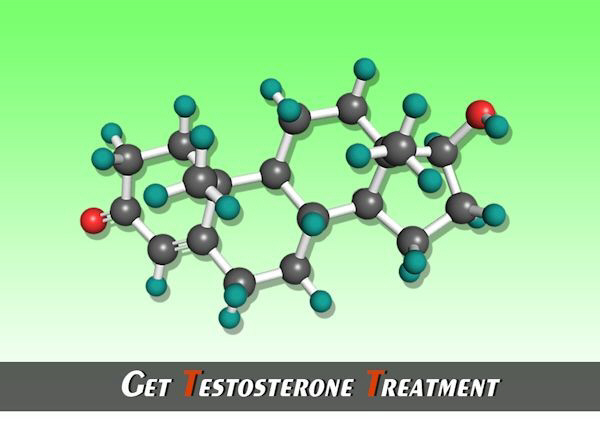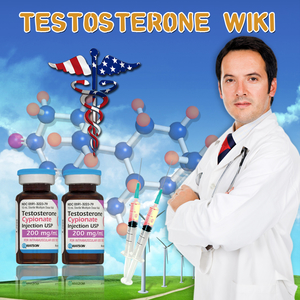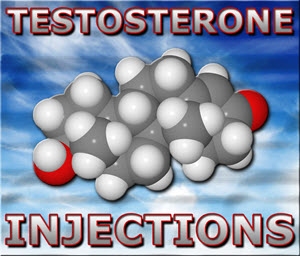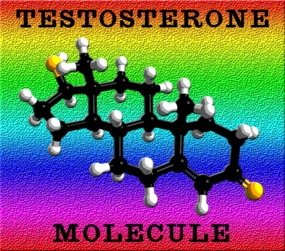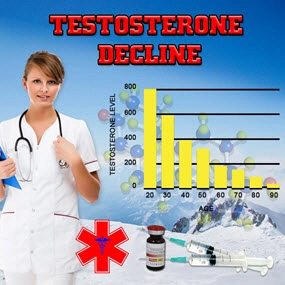Introduction to Saizen and Its Uses
Saizen, a brand name for somatropin, is a synthetic human growth hormone used primarily to treat growth failure in children and adolescents, as well as adults with growth hormone deficiency. For American males, particularly those diagnosed with these conditions, Saizen offers a pathway to improved health and quality of life. However, like any medication administered via injection, it can lead to injection site reactions, which can be a concern for patients.
Understanding Injection Site Reactions
Injection site reactions are common with injectable medications and can manifest as redness, swelling, pain, or itching at the site of injection. For males using Saizen, these reactions can range from mild and transient to more severe and persistent, potentially impacting adherence to treatment. It is crucial for patients and healthcare providers to recognize these reactions early and manage them effectively to ensure the continued success of therapy.
Strategies for Minimizing Injection Site Reactions
To minimize the occurrence and severity of injection site reactions, several strategies can be employed. Firstly, **rotating injection sites** is essential. By changing the location of the injection with each dose, the skin and subcutaneous tissue are given time to recover, reducing the risk of localized irritation. Common sites for Saizen injections include the abdomen, thigh, and buttocks.
Secondly, **proper injection technique** plays a pivotal role. Ensuring the needle is inserted at the correct angle and depth can prevent unnecessary trauma to the tissue. Patients should be trained by healthcare professionals on the correct method of injection to minimize discomfort and tissue damage.
Managing Existing Reactions
When injection site reactions do occur, prompt and appropriate management is key. For mild reactions, applying a cold compress to the affected area can help reduce swelling and alleviate discomfort. Over-the-counter topical treatments, such as hydrocortisone cream, may also be beneficial in reducing inflammation and itching.
In cases where reactions are more severe or persistent, it is important for patients to consult their healthcare provider. In some instances, a change in the type of needle or injection device may be recommended to reduce the likelihood of future reactions. Additionally, healthcare providers may suggest adjusting the frequency or dosage of Saizen to better suit the patient's tolerance.
The Importance of Patient Education and Support
Educating male patients about the potential for injection site reactions and how to manage them is a critical component of care. Providing clear, concise information on what to expect and how to respond can empower patients to take an active role in their treatment. Support from healthcare providers, as well as from patient advocacy groups, can also be invaluable in helping patients navigate the challenges associated with Saizen therapy.
Conclusion: Enhancing Patient Outcomes
For American males using Saizen, managing injection site reactions effectively is essential for maintaining treatment adherence and achieving optimal health outcomes. By employing strategies to minimize reactions, promptly addressing any that occur, and ensuring patients are well-educated and supported, healthcare providers can help their patients successfully manage growth hormone deficiency and related conditions. With the right approach, the benefits of Saizen can be maximized, leading to improved quality of life for those it serves.
Contact Us Today For A Free Consultation

- Unveiling the Impact of Saizen on Immune Health in Men with Growth Hormone Deficiency [Last Updated On: February 22nd, 2025] [Originally Added On: February 22nd, 2025]
- Unveiling the Cardiovascular Benefits of Saizen in Growth Hormone Deficient Men [Last Updated On: February 25th, 2025] [Originally Added On: February 25th, 2025]
- Cost-Effectiveness of Saizen Therapy for Growth Disorders in American Males [Last Updated On: March 6th, 2025] [Originally Added On: March 6th, 2025]
- Unveiling the Potential of Saizen in Treating Short Stature due to SHOX Deficiency [Last Updated On: March 15th, 2025] [Originally Added On: March 15th, 2025]
- Exploring the Cost-Effectiveness of Saizen Therapy for Pediatric Growth Disorders in American Males [Last Updated On: March 16th, 2025] [Originally Added On: March 16th, 2025]
- Unveiling the Effects of Saizen on Adrenal Function in Men with Growth Hormone Deficiency [Last Updated On: March 16th, 2025] [Originally Added On: March 16th, 2025]
- Unveiling the Effects of Saizen on Sexual Function in Men with Growth Hormone Deficiency [Last Updated On: March 16th, 2025] [Originally Added On: March 16th, 2025]
- Exploring the Dual Benefits of Saizen in Pediatric Depression: Enhancing Growth and Emotional Well-being [Last Updated On: March 16th, 2025] [Originally Added On: March 16th, 2025]
- Exploring the Impact of Saizen on Bladder Function in Men with Growth Hormone Deficiency [Last Updated On: March 16th, 2025] [Originally Added On: March 16th, 2025]
- Saizen Therapy Enhances Growth and Health in American SGA Boys: Long-Term Effects [Last Updated On: March 16th, 2025] [Originally Added On: March 16th, 2025]
- Saizen Enhances Exercise Capacity in Men with Growth Hormone Deficiency [Last Updated On: March 17th, 2025] [Originally Added On: March 17th, 2025]
- Saizen: Exploring Its Anti-Aging Potential and Risks for American Males [Last Updated On: March 18th, 2025] [Originally Added On: March 18th, 2025]
- Saizen Benefits for American Males: Muscle, Bone, and Energy Enhancement [Last Updated On: March 18th, 2025] [Originally Added On: March 18th, 2025]
- Saizen's Impact on Growth in American Males with Noonan Syndrome: A Review [Last Updated On: March 19th, 2025] [Originally Added On: March 19th, 2025]
- Saizen Enhances Cognitive Function in Males with Growth Hormone Deficiency: Clinical Insights [Last Updated On: March 19th, 2025] [Originally Added On: March 19th, 2025]
- Saizen's Role in Managing Cachexia: Benefits, Challenges, and Future Research [Last Updated On: March 21st, 2025] [Originally Added On: March 21st, 2025]
- Saizen Therapy: Enhancing Growth in Children with Intrauterine Growth Retardation [Last Updated On: March 21st, 2025] [Originally Added On: March 21st, 2025]
- Saizen Therapy for Growth in Down Syndrome Children: Benefits and Considerations for American Families [Last Updated On: March 21st, 2025] [Originally Added On: March 21st, 2025]
- Saizen's Impact on Body Composition in American Men with Growth Hormone Deficiency [Last Updated On: March 21st, 2025] [Originally Added On: March 21st, 2025]
- Saizen's Potential to Enhance Fertility in American Males with Growth Hormone Deficiency [Last Updated On: March 21st, 2025] [Originally Added On: March 21st, 2025]
- Saizen's Role in Managing Osteoporosis in American Males with Growth Hormone Deficiency [Last Updated On: March 22nd, 2025] [Originally Added On: March 22nd, 2025]
- Saizen's Impact on Sleep Patterns in American Men with Growth Hormone Deficiency [Last Updated On: March 22nd, 2025] [Originally Added On: March 22nd, 2025]
- Saizen Enhances Wound Healing in American Males with Growth Hormone Deficiency [Last Updated On: March 22nd, 2025] [Originally Added On: March 22nd, 2025]
- Saizen's Impact on Hearing in American Men with Growth Hormone Deficiency [Last Updated On: March 23rd, 2025] [Originally Added On: March 23rd, 2025]
- Saizen Enhances Skin Health in American Males with Growth Hormone Deficiency [Last Updated On: March 23rd, 2025] [Originally Added On: March 23rd, 2025]
- Saizen's Impact on Growth in Children with Juvenile Idiopathic Arthritis: A Review [Last Updated On: March 24th, 2025] [Originally Added On: March 24th, 2025]
- Saizen: A Promising Treatment for Hair Loss in Growth Hormone Deficient American Males [Last Updated On: March 24th, 2025] [Originally Added On: March 24th, 2025]
- Saizen's Impact on Dental Development in American Boys with Growth Hormone Deficiency [Last Updated On: March 24th, 2025] [Originally Added On: March 24th, 2025]
- Managing Saizen Allergic Reactions: Strategies for American Males [Last Updated On: March 24th, 2025] [Originally Added On: March 24th, 2025]
- Saizen Therapy's Impact on Growth in American Boys with Cystic Fibrosis [Last Updated On: March 24th, 2025] [Originally Added On: March 24th, 2025]
- Saizen Therapy: Enhancing Growth and Seizure Control in American Male Children with Epilepsy [Last Updated On: March 24th, 2025] [Originally Added On: March 24th, 2025]
- Saizen: Treating Growth Hormone Deficiency and Obesity in American Males [Last Updated On: March 24th, 2025] [Originally Added On: March 24th, 2025]
- Saizen Boosts Lung Function in American Males with Growth Hormone Deficiency [Last Updated On: March 25th, 2025] [Originally Added On: March 25th, 2025]
- Saizen's Role in Managing Asthma for Men with Growth Hormone Deficiency [Last Updated On: March 25th, 2025] [Originally Added On: March 25th, 2025]
- Saizen: Transforming Adult Growth Hormone Deficiency Treatment and Quality of Life [Last Updated On: March 25th, 2025] [Originally Added On: March 25th, 2025]
- Saizen Therapy: Enhancing Growth and Bleeding Control in Boys with Hemophilia [Last Updated On: March 25th, 2025] [Originally Added On: March 25th, 2025]
- Saizen's Impact on Growth in American Males with Autism Spectrum Disorders [Last Updated On: March 25th, 2025] [Originally Added On: March 25th, 2025]
- Saizen Therapy: Enhancing Growth in Children with Chronic Kidney Disease [Last Updated On: March 25th, 2025] [Originally Added On: March 25th, 2025]
- Monitoring Growth Velocity in American Males on Saizen Therapy: A Comprehensive Guide [Last Updated On: March 25th, 2025] [Originally Added On: March 25th, 2025]
- Saizen's Role in Managing Growth Hormone Deficiency and Diabetes in American Men [Last Updated On: March 25th, 2025] [Originally Added On: March 25th, 2025]
- Saizen's Impact on Mental Health in Growth Hormone Deficient American Males [Last Updated On: March 26th, 2025] [Originally Added On: March 26th, 2025]
- Saizen Therapy Enhances Growth in Children with Spinal Muscular Atrophy: A Review [Last Updated On: March 26th, 2025] [Originally Added On: March 26th, 2025]
- Saizen's Impact on Growth in American Males with Congenital Heart Disease [Last Updated On: March 26th, 2025] [Originally Added On: March 26th, 2025]
- Saizen's Impact on Gastrointestinal Health in American Males with Growth Hormone Deficiency [Last Updated On: March 27th, 2025] [Originally Added On: March 27th, 2025]
- Saizen Enhances Liver Function in American Males with Growth Hormone Deficiency [Last Updated On: March 27th, 2025] [Originally Added On: March 27th, 2025]
- Saizen's Impact on Growth in American Males with Celiac Disease: A Comprehensive Review [Last Updated On: March 27th, 2025] [Originally Added On: March 27th, 2025]
- Saizen Enhances Vision in American Men with Growth Hormone Deficiency [Last Updated On: March 27th, 2025] [Originally Added On: March 27th, 2025]
- Saizen Enhances Post-Surgical Recovery in American Males with Growth Hormone Deficiency [Last Updated On: March 27th, 2025] [Originally Added On: March 27th, 2025]
- Saizen's Impact on Thyroid Function in American Men with Growth Hormone Deficiency [Last Updated On: March 27th, 2025] [Originally Added On: March 27th, 2025]
- Saizen Therapy: Enhancing Growth and Motor Function in Children with Cerebral Palsy [Last Updated On: March 27th, 2025] [Originally Added On: March 27th, 2025]
- Saizen's Impact on Adrenal Function in American Men with Growth Hormone Deficiency [Last Updated On: March 27th, 2025] [Originally Added On: March 27th, 2025]
- Saizen's Multifaceted Benefits in Managing IBD and GHD in American Males [Last Updated On: March 27th, 2025] [Originally Added On: March 27th, 2025]
- Saizen's Impact on Pubertal Development in American Males with Growth Hormone Deficiency [Last Updated On: March 28th, 2025] [Originally Added On: March 28th, 2025]
- Saizen's Impact on Kidney Function in American Males with Growth Hormone Deficiency [Last Updated On: March 28th, 2025] [Originally Added On: March 28th, 2025]
- Saizen's Impact on Growth in Children with Sickle Cell Disease: Insights for American Males [Last Updated On: March 28th, 2025] [Originally Added On: March 28th, 2025]
- Saizen's Role in Managing Anemia in American Males with Growth Hormone Deficiency [Last Updated On: March 29th, 2025] [Originally Added On: March 29th, 2025]
- Saizen Enhances Bladder Function in American Men with Growth Hormone Deficiency [Last Updated On: March 29th, 2025] [Originally Added On: March 29th, 2025]
- Saizen Therapy Enhances Pancreatic Function in American Men with GHD: Current Insights [Last Updated On: March 29th, 2025] [Originally Added On: March 29th, 2025]
- Saizen Therapy Enhances Growth in American Boys with Type 1 Diabetes [Last Updated On: March 29th, 2025] [Originally Added On: March 29th, 2025]
- Saizen's Impact on Reproductive Health in American Men with Growth Hormone Deficiency [Last Updated On: March 31st, 2025] [Originally Added On: March 31st, 2025]
- Saizen's Impact on Growth and Health in Children with PCOS: A Review [Last Updated On: April 3rd, 2025] [Originally Added On: April 3rd, 2025]
- Saizen's Role in Managing Endometriosis and GHD in American Males [Last Updated On: April 4th, 2025] [Originally Added On: April 4th, 2025]
- Saizen's Impact on Prostate Health in Men with Growth Hormone Deficiency [Last Updated On: April 4th, 2025] [Originally Added On: April 4th, 2025]
- Saizen's Impact on Menstrual Cycles in American Women with Growth Hormone Deficiency [Last Updated On: April 6th, 2025] [Originally Added On: April 6th, 2025]
- Saizen: Treating Growth Hormone Deficiency and Delayed Puberty in American Males [Last Updated On: April 7th, 2025] [Originally Added On: April 7th, 2025]
- Saizen: Enhancing Growth in Children with Precocious Puberty [Last Updated On: April 7th, 2025] [Originally Added On: April 7th, 2025]
- Saizen Treatment and Breast Development in Male Growth Hormone Deficiency Patients [Last Updated On: April 7th, 2025] [Originally Added On: April 7th, 2025]
- Saizen Therapy Enhances Growth and Hormonal Balance in Boys with Testicular Disorders [Last Updated On: April 8th, 2025] [Originally Added On: April 8th, 2025]
- Saizen's Impact on Sexual Function in American Males with Growth Hormone Deficiency [Last Updated On: April 10th, 2025] [Originally Added On: April 10th, 2025]
- Saizen's Potential Benefits for American Males with GHD and ASD: A Comprehensive Review [Last Updated On: April 10th, 2025] [Originally Added On: April 10th, 2025]
- Saizen Enhances Mood and Quality of Life in Men with Growth Hormone Deficiency [Last Updated On: April 10th, 2025] [Originally Added On: April 10th, 2025]
- Saizen Therapy Enhances Growth and Psychological Health in American Male Children with Gender Dysphoria [Last Updated On: April 11th, 2025] [Originally Added On: April 11th, 2025]
- Saizen Reduces Anxiety in Men with Growth Hormone Deficiency: Recent Studies Show [Last Updated On: April 12th, 2025] [Originally Added On: April 12th, 2025]
- Saizen's Potential Benefits for Growth and Depression in American Children: A Review [Last Updated On: April 12th, 2025] [Originally Added On: April 12th, 2025]
- Saizen's Role in Treating GHD and ADHD in American Males: A Comprehensive Overview [Last Updated On: April 14th, 2025] [Originally Added On: April 14th, 2025]
- Saizen Enhances Attention in American Males with Growth Hormone Deficiency: Clinical Insights [Last Updated On: April 16th, 2025] [Originally Added On: April 16th, 2025]
- Saizen Enhances Memory in Males with Growth Hormone Deficiency: Clinical Insights [Last Updated On: April 16th, 2025] [Originally Added On: April 16th, 2025]
- Saizen Therapy Enhances Growth and Motor Skills in American Male Children [Last Updated On: April 17th, 2025] [Originally Added On: April 17th, 2025]
- Saizen Enhances Coordination in American Males with Growth Hormone Deficiency [Last Updated On: April 17th, 2025] [Originally Added On: April 17th, 2025]
- Saizen Enhances Balance in American Men with Growth Hormone Deficiency: A Comprehensive Review [Last Updated On: April 18th, 2025] [Originally Added On: April 18th, 2025]
Word Count: 521

